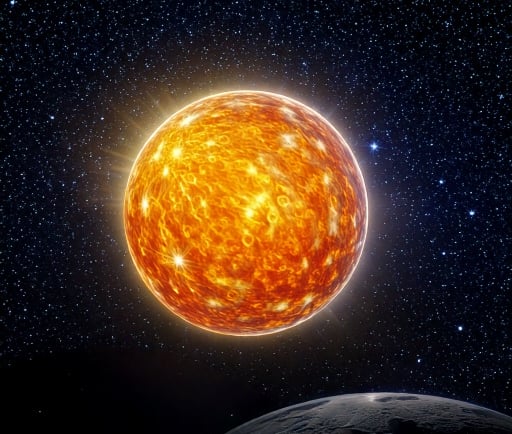The Stephenson 2-1B: The Largest Red Supergiant Star known


Introduction to Stephenson 2-1B
In the vast expanse of our universe, stars vary in size, temperature, and luminosity, with some reaching monumental proportions. Among these celestial giants, the Stephenson 2-1B stands out as a massive red supergiant star, and is recognized as the largest known star to date. This remarkable stellar body not only captivates the minds of astronomers but also challenges our understanding of stellar evolution and the lifecycle of massive stars.
Attributes of Stephenson 2-1B
Stephenson 2-1B is part of a cluster known as Stephenson 2, located approximately 19,000 light-years away from Earth in the constellation of Cassiopeia. With a radius estimated to be over 2,000 times that of our Sun, it represents an astonishing example of stellar mass and size.
One of the most striking features of Stephenson 2-1B is its intricate structure. It exists in a stage of evolution characterized by rapid changes in temperature and brightness. The star has a total luminosity that is approximately 500,000 times greater than the Sun, making it incredibly luminous. Despite its size, the birth of Stephenson 2-1B is traced back to a massive molecular cloud from which it originally formed, leading to its current classification as a red supergiant.
The Scientific Significance of Massive Stars
The study of massive stars like Stephenson 2-1B is crucial to our understanding of the universe. These stars play a pivotal role in the synthesis of heavy elements, which are formed during their nuclear fusion processes. Upon exhausting their nuclear fuel, they often culminate in spectacular supernova explosions. This explosive phenomenon not only contributes to the recycling of matter in the galaxy but also enriches the interstellar medium with elements necessary for star and planet formation.
Moreover, observing such red supergiants allows astronomers to refine models of stellar evolution and the mechanics of supernovae. The end stages of massive stars lead to the creation of neutron stars or black holes, both fascinating areas of research in astrophysics.
Conclusion
In conclusion, the Stephenson 2-1B serves as a remarkable focal point for astronomers and astrophysicists alike. Its immense size, luminosity, and pivotal role in cosmic evolution compel ongoing observation and analysis. As technology advances and our observational methods improve, we anticipate further revelations about this extraordinary red supergiant star, enriching our comprehension of the universe's grandeur and complexity.
